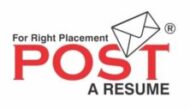
The upheaval of 2020 had many organisations scrambling to adopt more agile HR practices or risk falling behind. But what does it take to get it right?
Survival in 2020 required rapid adaptation. This meant organisations that had baked agility into their processes were already one step ahead.
Research from McKinsey found mature, agile organisations were able to adapt faster to the pandemic; it measured the time 36 telco providers across 11 Asian and European countries took to launch services in response to COVID-19, such as providing additional data or bandwidth.
Highly agile telcos responded on average two times faster than non-agile ones. When the telcos were asked why, the answers fell into two broad categories: response at a team level and response at an enterprise level to rapidly align with shifting priorities.
The fundamentals of agile structures make this unsurprising; two of their hallmarks are a focus on customer outcomes (which makes it easier to respond to their needs in times of change) and empowering staff to do their jobs independently (which helps when everyone is suddenly being forced to work from home).
“In the current environment, all leaders can really do is coach others. So many people have had to take a step up and complete tasks on their own,” says organisational psychologist Graham Winter of Think One Team.
Because agile thinking and processes bring widespread changes to the way a company and its employees operate, HR’s guidance is essential.
Adopting agile HR practices
A 2020 report from Gartner found 74 per cent of HR leaders indicated that their organisations are undergoing a broad, agile transformation.
Generally, these transformations cover areas such as: challenging ways of working, revamping processes, examining strategy, energising people, allocating resources fluidly where they are needed and looking at technology usage.
“It’s about pulling together all the elements, such as changing HR practices, rewarding staff, removing silos and delivering more value for clients,” says Winter.
HR needs to drive this mindset shift towards new ways of working, but this doesn’t mean working alone. As Eduardo Nofuentes, director of consultancy Neu21, says, the impetus has to come from both the bottom and the top – because without this, any transformation is going to be difficult.
Swiss-headquartered pharmaceutical company Roche knew this from the start. It began its transformation in Australia in mid-2019 (it’s also transforming on a global scale) and it’s still ongoing. Rebecca Casey, people and culture lead at Roche Pharmaceuticals, agrees that while HR played an important part in rolling this out, they were careful to make sure the change came from leadership as they didn’t want it to be seen as just “another HR initiative”. And that, she says, is what led to the transformation’s success.
Under agile structures, Roche’s leadership is now based around being a visionary, architect, catalyst and coach rather than more traditional notions of management.
This also means staff are “treated like adults” and empowered, and in return expected to be accountable and transparent, says Casey.
Some employees have found this transition hard, while others have responded well. Casey says this means Roche will naturally attract and retain those who fit with its preferred way of working.
The next part of the process will be around finalising how to incentivise and reward employees – for example, moving away from the typical manager-led performance reviews and trialling something new – because when you pledge to overhaul your work system to align with modern expectations, you often need to make sure no processes are left behind.
What are your next steps?
But what can HR do in practical terms to help facilitate agile thinking and approaches? The first step is to help organisations switch focus.
“How do we change from delivering projects to understanding a concept and delivering an outcome?” says Jason Inacio, partner at McKinsey.
As Gartner found, 78 per cent of HR professionals have neither a defined strategy nor outcome in place to guide their application of agile structures in the HR function. This makes it difficult for HR to take action because they are the ones responsible for spearheading the implementation of agile working models where employees feel trusted and managers guide rather than give orders.
“Agility is being able to move quickly and easily, so trust is essential. And because employees feel they are being judged on their outcomes not output, they are more able to adapt,” says Nofuentes.
If you need a place to start on your agile journey, look at how people spend their time.
Gartner’s research found only one-third of HR leaders agree projects are paused or stopped if they are no longer deemed strategic or valuable. Roche identified this as a friction point for its workforce, so to save time it adopted a philosophy called ‘pragmatic over perfect’. For example, one of the first changes implemented was in finance planning, which included doing away with unnecessarily complicated budgeting processes.
Another example might be to not perfect an internal presentation when time could be better placed working on something with customer-related outcomes.
Inacio says some other examples of agile working structures could include daily stand-ups to discuss work, retrospectives on projects and teams deciding for themselves what they will work on – this encourages a culture of consistent feedback and iteration, which improves results and removes unnecessary barriers to the desired outcomes.
These are only examples, and small ones at that, but by taking the time to assess where time could be trimmed and friction points remedied, it can make all the difference in the world. Agile transformations will likely continue increasing in popularity as the ongoing effects of the COVID-19 pandemic force employers to better respond to customer and employer needs in times of change and uncertainty.
HR must take a front seat in driving mindset shifts and new ways of working, alongside buy-in from management. Focusing on outcomes, ensuring people are trusted and managers act differently are all areas where it’s crucial for HR to take the initiative in bringing about change.
Read More Updates…
Gaurav Pokhariyal to take over from PV Murthy at Indian Hotels
Baggage Delivery Delayed at Mumbai Airport as SpiceJet Loaders go on Strike Due to Salary Cut
US stocks set to resume climb, while bond yields and the dollar slip as investors mull lower-than-expected inflation
Kotak Life appoints Ruchira Bhardwaja as CHRO
Lok Sabha TV and Rajya Sabha TV merged, Ravi Capoor appointed CEO
